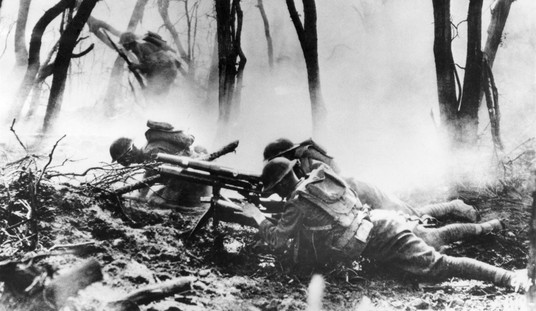https://www.youtube.com/watch?v=iJNNugNe0Wo
“I like to say I’m more conservative than Goldwater. He just wanted to turn the clock back to when there was no income tax. I want to turn the clock back to when people lived in small villages and took care of each other.”
—Stalinist and banjo player Pete Seeger, during a 1995 interview with the New York Times.
“When people have the power to choose, they choose wrong. Every single time.”
—Meryl Streep’s “Chief Elder” character in The Giver.
Now out on DVD and Blu-Ray is The Giver, an adaptation of Lois Lowry’s hugely influential 1993 young-adult dystopian novel, which inspired The Hunger Games and other cautionary futuristic tales. Starring Jeff Bridges in the film’s title role, Meryl Streep, newcomer Brenton Thwaites, and blink and you’ll miss her Taylor Swift, it’s a film that conservatives and libertarians should take to heart and advise all of their friends to see, to understand what lurks at the bottom of an otherwise cheery, friendly and seemingly carefree nanny state. (Spoilers abound in this article. You’ve been warned.)
“Don’t Immanentize the Eschaton” was a bumper sticker phrase that was very popular among the early readers of National Review magazine in the 1960s. Coined in the previous decade by conservative sociologist Eric Voegelin, and popularized by William F. Buckley, the phrase warned that the goal of creating Heaven on Earth, a goal that ties together virtually all leftwing ideologies, from National Socialists in Germany to International Socialists in the Soviet Union and China to the Fabian Socialists of England to Democratic socialists in America, was invariably going to (a) end in failure and (b) very likely end with lots people loaded into boxcars on their way to becoming dead bodies.
And yet, crafting Heaven on Earth remains the goal of the left to this very day. Whether they’re based in Los Angeles or London, most actors and filmmakers have politics somewhere to the left of Mao. As James Lileks once joked, “Maybe directors like dictators because they understand the desire to have final cut.” So I’m always intrigued whenever a bunch of left-leaning filmmakers get together to produce a cautionary tale of a futuristic socialist dystopia, and I like to ask myself, what we’re they thinking they were filming?
I’ve read that the cast and crew of 1984 thought that they were taking a clever shot at Margaret Thatcher, never mind that the subjects of Orwell’s groundbreaking dystopia were dominated by an ideology he dubbed “Ingsoc,” short for English Socialism, Soviet-style Communism with a British accent. The following year, Terry Gilliam directed his similarly themed film Brazil, focusing on another slightly futuristic out-of-control socialist bureaucracy with a penchant for kidnapping, torture and murder. But then last year, Gilliam told an interviewer that Republicans “will always be a fungus and if I was running the country I would take them out and shoot them frankly, but that’s something else [laughs],” ret-conning his 1985 film from a warning into a how-to guide. Since 2012, Obama-fan Donald Sutherland has starred as the murderous President Coriolanus Snow in the Hunger Games franchise, despite doing his bit to usher in a real-life totalitarian government in Vietnam through his appearances alongside Jane Fonda in their infamous F.T.A. tour of US Army bases in 1971.
Hot on the heels of the success of the Obama-era Hunger Games franchise, last year, the Weinstein Company, not exactly known for its libertarian politics, released The Giver, starring Jeff Bridges and Meryl Streep, and directed by Phillip Noyce, whose previous films include 1989’s Dead Calm and the Tom Clancy adaptations starring Harrison Ford, Patriot Games and Clear and Present Danger.

While The Giver’s source novel was written by Lois Lowry in 1993, 15 years before Suzanne Collins’ first Hunger Games novel, the movie version has to compete with the Hunger Games film franchise (and all of the other dystopian movies that have come before), and appears to be a modest and lyrical effort in comparison. But taken as a standalone work, it’s a chilling portrait of exactly the sort of dystopia the left has been striving towards, for well over a century. Or as Orrin Judd of the long-running Brothers Judd blog wrote on Lowry’s book in August of 2001:
Eventually, The Giver reveals to Jonas just how the society manages to keep its numbers so perfectly balanced, where the old go when they seek “Release”, where little children who have trouble fitting in to the society are really taken when they are “Released”. It finally dawns on Jonas that the third child his family unit has taken in, who is having trouble adjusting himself, is being taken to Release, and that his father will perform the Release himself, willingly. So Jonas and The Giver decide to act, to seek to return the memories that they hold to the people around them, no matter the cost.
* * * * * *
The Community is nothing more than the realization of the Left’s politically-correct, egalitarian dreams. It is the kind of dehumanized totalitarian world where all other imperatives and values have been sacrificed to the ideal of a sterile, painless, sameness. It is entirely fitting that Jonas’s first vision of a something else lurking beyond the gray world that he perceives comes when he is looking at an apple, for the community leads the kind of bovine existence that Man would have had if we had never eaten from the Tree of Knowledge and learned, however painfully, of good and evil. And in the closing sections of the book, what Jonas and The Giver decide is that in order to be fully human, people must share this knowledge, must be forced to make choices for themselves, must revel in their differences not fear them, must feel pain in order that they may feel joy, must comprehend the horror of killing the weak and the different simply to benefit the many. In the most profound sense, they choose life for the community, the tumultuous, challenging, maddening, often incomprehensible, too often violent, life that is Man’s lot until we can learn to be truly good. For the community is not good; it is evil. It is, in the truest sense, anti-human.
If watching the film version of The Giver feels like we’ve seen its plot points before, it’s because we’ve now had nearly a century of dystopian novels and films, and a sort of shorthand (or tropes, to borrow from the sprawling TV Tropes Website) has developed over time to tell these stories. In 1949, Joseph Campbell published his highly influential The Hero with a Thousand Faces, which traced mankind’s recurring theme of the hero on an epic quest for freedom, redemption, and/or salvation for his people. It would be read by filmmakers as disparate as Stanley Kubrick and George Lucas, and its themes can be observed at work in such otherwise widely different films as 2001: A Space Odyssey, Star Wars, and the Lord of the Rings trilogy.
Since the dawn of “Progressivism” in the second half of the 19th century and the concomitant rise of totalitarianism in the guise of Communism and international and national socialism, a similar set of recurring leitmotifs have been created to craft the cautionary tales of dystopian future worlds, using science fiction as a thinly disguised parable of the worst of our current day worlds. In 1924, not long after the rise of the Soviet Union, Russian novelist Yevgeny Zamyatin wrote the futuristic parable We, which would go on to inspire Aldous Huxley’s Brave New World, Ayn Rand’s Anthem, and Orwell’s 1984.
Shortly after 1984’s publication, Ray Bradbury would write Fahrenheit 451, which would be adapted into a film in the following decade directed by François Truffaut. In the early 1970s, George Lucas released THX-1138, his first feature film, which incorporated many of the themes of these earlier works, but ending, as did so many of Lucas’ films, with an epic mechanized chase. A few years later, MGM would release Logan’s Run, another film concerning the escape from a futuristic closed dystopian society.
The Giver hits many of the plot points these previous films have explored, though without the nudity and in some cases the extreme violence that the film adaptations of 1984, Logan’s Run and THX all share. Plus its starring trio are younger than most dystopian protagonists — they were each 12 years old in Lowry’s novel; bumped up to 16 in the film.
The Machine For Living In
Then there’s The Giver’s production design, which for those with even a modest knowledge of the history of modern architecture, is freighted with symbolism. After decades of Blade Runner-inspired dark urban neo-noir art direction, The Giver is the first sci-fi film I can remember in a long time whose production design is built around the clean white flat-roofed buildings of the early International Style of the 1920s. The two-story houses that dominate The Giver’s central “Community” look remarkably like some of the buildings of the Weissenhofsiedlung, a showcase of apartments built in Stuttgart in 1927 by Europe’s most prominent modern architects under the direction of the final leader of the Bauhaus, Mies van der Rohe. All of the buildings were white stucco exteriors with flat roofs, ribbon windows, and not an applied decoration in sight. The “Bauhaus style proceeded from certain firm assumptions. First, the new architecture was being created for the workers. The holiest of all goals: perfect worker housing. Second, the new architecture was to reject all things bourgeois,” as Tom Wolfe wrote in From Bauhaus to Our House.
Corbusier was one of the many architects who participated in the project, and one of his recurring leitmotifs was situating his stark white flat-roofed architecture in lush green parks — just like “The Community” of The Giver — which also resembles “The Village” of Patrick McGoohan’s landmark 1967 TV series The Prisoner, and the surrealistic setting of the 1998 film, The Truman Show. The Community’s ubiquitous streamlined bicycles are the stuff of dreams for nanny staters like Barack Obama, Michael Bloomberg and Howard Dean, and vaguely recall the penny-farthing bicycle that was the symbol of The Prisoner. (And is it just me, or does the Community’s “Odeon” domed town hall/stadium/central meeting place look suspiciously like Jerry Jones’ huge ultra-modern Cowboys Stadium? I wonder if he gouges for season tickets there as well…)
Walter Gropius, the founder of the Bauhaus, was another aficionado of “green” architecture, which he had hoped would allow a rapprochement with the successor regime to Weimer, as historian Jonathan Petropoulos wrote in his recent book, Artists Under Hitler: Collaboration and Survival in Nazi Germany:
A key, for Gropius, was green architecture: both in the sense of the conservation of resources and with regard to nature. The homes and housing complexes he designed always featured garden spaces, and the buildings stood in proportion to nature (never exceeding four stories). The idea was to have people surrounded by trees and grass, and to make it easy to access these resources (no long elevator rides as in a skyscraper). This, in concert with the technology, would provide a life-enhancing balance. Gropius’s efforts to reclaim technology, to use it for benign purposes, proved a viable project. His success in this regard led him to be overconfident about his ability to find common cause with the Nazi regime, which had its own “green” agenda, albeit as part of a broader racist worldview. Hitler marketed the Autobahnen, for example, as providing the means for urban residents to escape the unhealthy city and connect with the supposedly pristine and restorative German countryside.
The apartment complex situated in a garden would become one of the recurring themes of postwar urban renewal in both Europe and America, with universally disastrous consequences. Or as Lileks wrote regarding François Truffaut’s 1966 adaptation of Ray Bradbury’s Fahrenheit 451, “Here’s what I find interesting: whenever the sci-fi movies of the 60s and 70s wanted to set something in a horrible totalitarian world, they just shot on location at a government housing project.” Perhaps it helps knowing that after the Weimar Regime fell to the Nazis, as Petropoulos thoroughly documents, both Mies and Gropius were eager to work with its successor regime during the early days of National Socialism, and Corbusier was an advisor to Vichy, the Nazis’ puppet government in occupied France.
Starting from Zero on the Way to the Ceremony of Release
As Wolfe wrote, the Bauhaus’s motto was “Start From Zero,” and the elders of The Giver’s Communities take that motto to heart as well. Like Logan’s Run and THX-1138, some sort of unspecified catastrophe virtually destroyed the previous civilization. And just as Logan’s Run had its “Carousel” and “Renewal Ceremony” to mask the zero population growth required death of its population, The Giver offers its elderly and unwanted citizens a “Ceremony of Release” to oblivion.
Like the 1998 film Pleasantville, The Giver begins in black and white and slowly adds color, to reflect the concept of “Sameness” at the start of the film, as John J. Miller wrote in his review of Lowry’s novel at National Review:
People aren’t supposed to brag about their accomplishments or talk about personal distinctions, not even the color of their eyes: “No one mentioned such things; it was not a rule, but was considered rude to call attention to things that were unsettling or different about individuals.” Later in the book, it becomes clear that the community is so serious about enforcing this code of conduct that the entire population has undergone genetic modification to eliminate the ability to see color. Everyone observes that eyes vary from light to dark, but they have no concept of blue or brown.
In addition, there’s almost no historical memory in the community. People know what happened yesterday, but they don’t know what happened a generation ago or how their ancestors lived — including, for example, the fact that they once could see in color. Everything has disappeared down the memory hole, to borrow the term Orwell made up in 1984 for a device that erases inconvenient truths. Without historical memory, of course, the conservative force of tradition can’t function — and something else must fill its vacuum.
It Takes a Futuristic Village
In her initial appearances as a giant hologram and with her clipped and condescending speech patterns, Meryl Streep as the “Chief Elder” seems eerily reminiscent of Hillary Clinton — and indeed The Community is the futuristic yet primitive village that Hillary believes it takes to raise a child. Near the end of the film, Streep’s Chief Elder sums up the theme of the film in a line that’s right of the Clinton/Obama playbook: “When people have the power to choose, they choose wrong. Every single time.” Which neatly ties together Bill Clinton’s 1999 line on tax cuts and returning the budget surplus of that era back to the taxpayers: “We could give it all back to you and hope you spend it right. . . . Do you really want to run the risk of squandering this surplus?” And Hillary’s infamous 2004 promise that “We’re going to take things away from you on behalf of the common good.”
Despite Hillary’s remarkable similarity to Streep’s Chief Elder character, it wouldn’t surprise me at all if The Giver’s author winds up voting for her in 2016. The Wall Street Journal noted last year, “while she’s quick to burnish her own Democratic Party leanings, Ms. Lowry concedes that social conservatives ‘could find their views validated by this book.”
Well, yes. Back in 2010, when socialist film critic Ann Hornaday of the Washington Post praised Sean Penn’s film Fair Game, on DC’s Valerie Plame affair while ignoring its absence of Richard Armitage, who outed Plame to journalist Robert Novak, she called for movies that create a faux history that while inaccurate, is usable for advancing the leftwing agenda:
Thus, the movies about Washington that get the right stuff right — or get some stuff wrong but in the right way — become their own form of consensus history. “Follow the money,” then, assumes its own totemic truth. Ratified through repeated viewings in theaters, on Netflix and beyond, these films become a mutual exercise in creating a usable past. We watch them to be entertained, surely, and maybe educated. But we keep watching them in order to remember.
Near the end of Liberal Fascism, Jonah Goldberg looked at Aldous Huxley’s Brave New World, and concluded, “Everything is easy under the [novel’s dystopian] World State. Everyone is happy. Indeed, the great dilemma for the reader of Brave New World is to answer the question, what’s wrong with it?”
The last act of The Giver chillingly answers that question. As Orrin Judd wrote of its source novel:
This is strong stuff, particularly for kids. Parents are right to be concerned about a book that relies so heavily on the notion that a society can determine which lives will continue and which must end. These are issues that parents need to discuss with their children, issues that lie at the very heart of a moral education. But let’s not miss the point here: the book is on our side. [emphasis mine — Ed]
And so is the movie. While The Giver hits many clichés and plot points from many earlier dystopian novels and films, conservatives and libertarians should be glad we’ve been given (pardon the pun) another film that’s a useable future — a warning of socialism’s endgame. The futuristic white walls look so clean and modern — but they also make quick work of hosing down the blood at the totalitarian abattoir that’s invariably just off screen in any dystopian society.










Join the conversation as a VIP Member